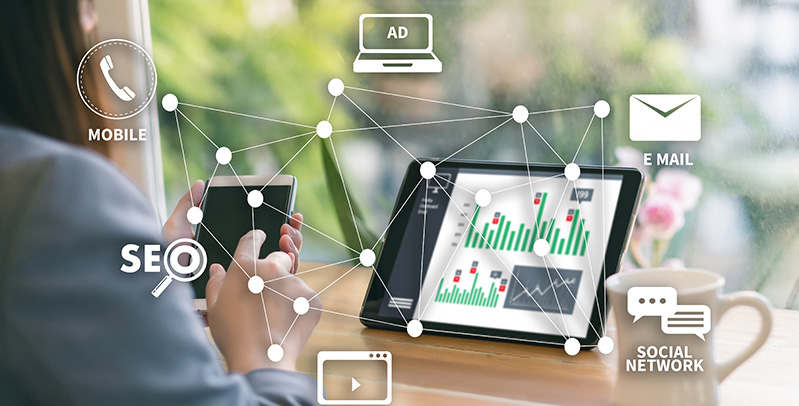This article was originally posted on ANA.
While it has been more than ten years since the U.S. was embroiled in a recession, it can be easy to forget the carnage that came with it. In recent weeks, COVID-19 has caused distress and confusion, leading many to believe we are entering another economic recession. Businesses fear slipping revenue — one of the many factors that can trigger a domino effect within the business landscape.
And, when businesses look to reprioritize their spend for the rest of the year ahead, ad and marketing spend is the first on the chopping block. After the stock market crash in 2008, for example, U.S. ad spend dropped by 13 percent.
While the economic uncertainties of a global pandemic remain unknown, history has shown some brands can emerge from a recession stronger and more profitable than before. In 1929, Procter and Gamble, like any consumer product company during the Great Depression, suffered due to low sales and an excess of inventory. However, the company quickly realized that, even in a depression, people would need soap. Instead of cutting its advertising and marketing costs, P&G actively pursued new marketing avenues such as commercial radio broadcast which allowed them to directly reach their target audience — homemakers. This initiative was so successful, the company created similar programs to support its other brands. To this day, P&G remains a household name because of the course of action it took nearly 100 years ago.
As we fast forward to the global pandemic we’re facing today, the digital marketing and advertising community is searching for ways to meet customer needs with limited resources. While technology has vastly changed from 1929, today’s marketers and advertisers can mirror P&G’s mission in its time of turmoil — continue creating personalized experiences for customers. As we navigate uncertain times, brands must adapt their marketing and advertising strategies to meet the needs of both their customers and the evolving business landscape.
The Digital Experience Is Becoming More Important Than Ever
In the early 2010s, the term “omnichannel marketing” began to rise in popularity. Prior to this, the thought of expanding into more than one marketing channel while still maintaining a consistent and unified message seemed impossible. However, with today’s ‘new normal’ of remote work and living, the online experience is more important than ever as individuals interact with brands across a variety of channels through multiple devices. Now, more than ever, it’s important brands offer a seamless and relevant digital marketing experience through an omnichannel approach.
According to a recent report, PwC found the number of companies investing in the omnichannel experience jumped from 20 percent to more than 80 percent over the past ten years. With many brick-and-mortar stores temporarily closing, consumers’ comfort with online shopping has increased. According to a recent study from eMarketer, more than 74.6 percent of U.S. internet users are likely to avoid stores altogether and begin shopping online. For brands with consumers around the globe, they can’t risk a one-size-fits-all approach to advertising — especially now, when consumers have a laser-focus on online purchasing. Brands must invest in the proper technology that will allow them to deliver a tailored message based on the time, location and interests of the consumer.
Doing More with Less
Creating a tailored message at scale can be intimidating for companies, especially when they consider the impact it can have on their advertising and marketing budgets. Historically, brands create the concept of an ad and then pass the template to other markets around the world to replicate the design at a local level. This can cause an unreasonable amount of duplicate work, which in turn, increases hours and costs.
With Dynamic Creative Optimization (DCO), brands can automatically generate all types of ad formats at a faster rate than humans are capable — maximizing the customer experience through personalized ads. This automated optimization can save them millions of dollars in marketing spend and allows more creative flexibility and control of the message. With DCO, brands avoid duplicate work of reformatting and resizing ads to meet the requirements of multiple channels — ultimately allowing them to do more with less. At a time when many things are uncertain, brands can turn to DCO to continue catering to customer needs, even with a reduced budget. Similar to how P&G adjusted its strategy to maintain its reputation and meet customer needs amid a global crisis, today’s digital marketers and advertisers can overcome barriers with DCO, positioning them for a successful future amid a whole lot of uncertainty.
Further, DCO helps with other significant challenges we are currently facing — not only are we in a global pandemic, but it has differential rates of spread and impact across the globe. For example, right now, China and parts of Asia are showing signs of full recovery from the virus, meaning the creative messaging there should be different from the brands messaging in the U.S. Even within the U.S., different states are at different stages of outbreak. Brands within these different states can leverage DCO to deliver differential messaging to each market reflecting more empathetic messaging vs. back-to-business messaging.
While COVID-19 has not only infected thousands on a personal level, it has sent us into an economic spiral. There are many unknowns about what the impact of COVID-19 might be, but one thing is for certain — this is an opportunity for global brands to simplify strategies and reevaluate consumer needs to continue thriving in a post-pandemic world.
